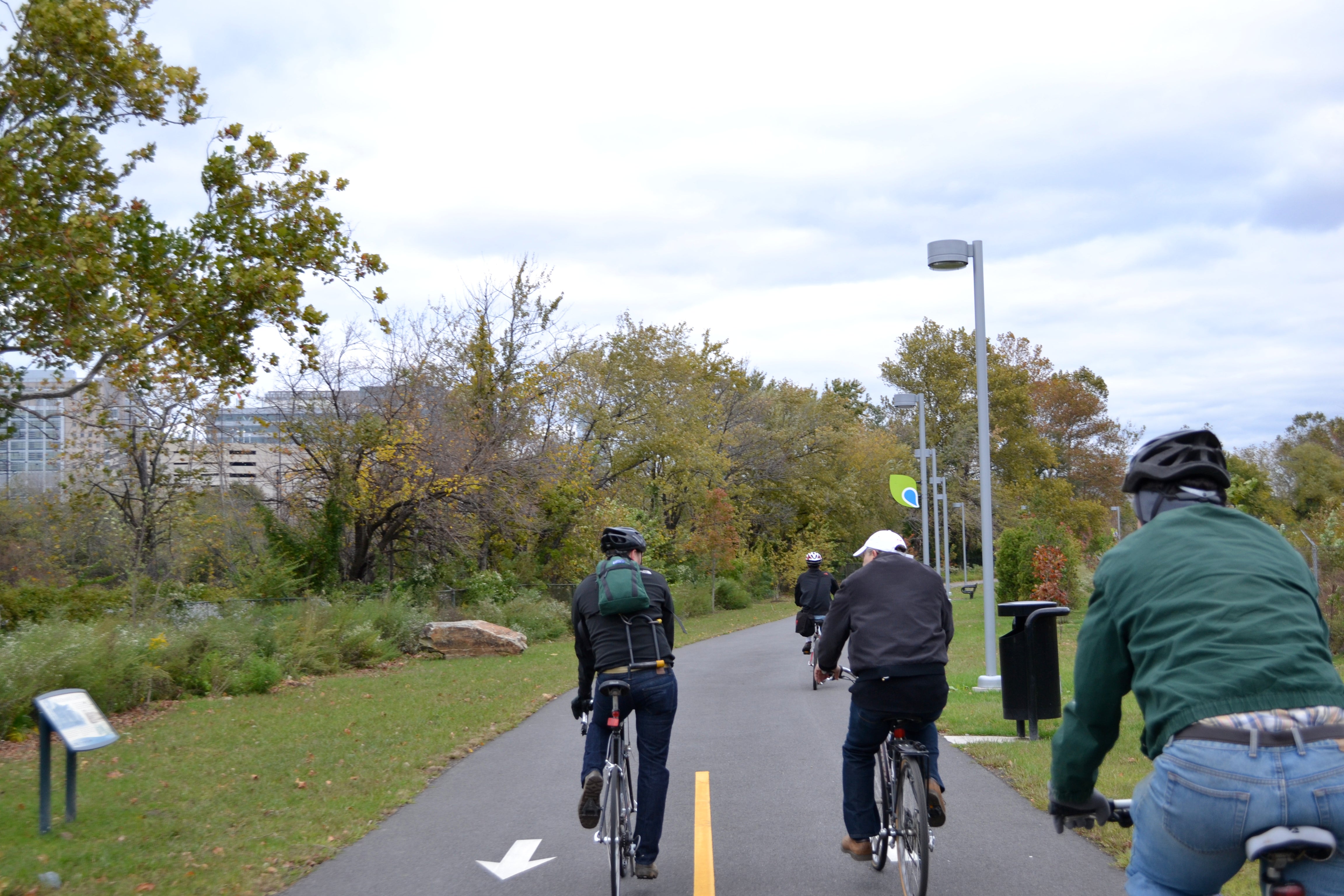William Penn uses trails to build Delaware River constituency

The William Penn Foundation made a splash this month when it announced a multi-year commitment to spend $35 million aimed at protecting the Delaware River watershed as a critical source of drinking water for 15 million people. But the foundation’s dedication to protecting and enhancing the Delaware River Watershed does not stop there. The foundation also has plans to use a perhaps less obvious tool to expand its watershed protection efforts: Recreation trails.
The William Penn Foundation has supported trail building efforts since the late 1970s and early 1980s when the Clean Water Act really started taking shape. Since then, William Penn-supported trails, including those that are part of The Circuit, have brought thousands of people to the banks of the rivers, streams and canals that make up the Delaware River Watershed.
The connection between the trails and the waterways was not always emphasized, but that’s about to change.
In its most recent strategic planning process, the foundation emphasized its focus on water issues and started to look at the role that trails play.
“With the foundation’s interest in water quality, because these trails are mostly along rivers, canals and streams, we view them more and more as a platform essential for reaching thousands of people who are right next to rivers about some sort of water quality message,” said Senior Program Officer Andrew Johnson. “We’re actually beginning to focus our grant making specifically on using trails as platforms to build the constituency.”
To utilize trails as constituency building platforms, the foundation asked itself, “How can we engage thousands of people who are in those places in some way to sort of convey to them, help them understand that their trail experience is far more enjoyable because they’re next to a relatively clean river?” Johnson said.
And it came up with a three-pronged approach.
For starters the William Penn Foundation will continue to support The Circuit – the proposed 750-mile network of interconnected bicycle and recreation trails. Most recently the foundation awarded $250,000 to the Delaware Valley Regional Planning Commission to support Circuit building efforts.
The second element will be to support a very targeted set of environmental centers that are on both Circuit trails and waterways. These centers are seen as gateways to the trails and waterways and an access point where the William Penn Foundation can underscore the notion that the users’ experiences on trails are better because of the clean water.
“Many people make those connections on their own, but many people don’t,” said Chief Philanthropy Officer Laura Sparks. “They’re just outside having a good time.”
The hope is “to leverage some existing assets and hopefully resource them in a way that can help people connect more proactively with the value of water as a resource,” Sparks said.
The third element of the approach is programming, and it is likely to come in many forms. It might range from high quality art that conveys the value of clean water to technology that shows water quality data in an engaging or thought provoking way.
The William Penn Foundation is still working to identify the centers that it will work with and to select the waterside trail programming, but “it is something that is a high priority for this year,” Johnson said.
The foundation has started testing this targeted strategy in and around Philadelphia.
As part of its support for the Bartram’s Garden strategic planning process, the foundation asked advocates to think about how, as the Schuylkill River Trail extends south, Bartram’s will be able to provide informal access to the river and formal programming.
In New Jersey’s Burlington and Camden counties, the William Penn Foundation has funded the YMCA’s work with Rails-to-Trails Conservancy, specifically with a program to train urban youth to use and repair bicycles. As part of the program youth take bike rides, some of which are along the Cooper River trail and along proposed Delaware River trail routes to Petty’s Island, which will later become a nature center.
“The point is that they will be aimed at targeted places with a consistent message to water and water quality,” Johnson said.
Exactly how much time and funding the William Penn Foundation will commit to this trail-based watershed advocacy approach will not be clear until specific trail projects, environmental centers and programming are selected, but Sparks said the foundation is committed to seeing this through.
“We recognize these things take time to get off the ground,” she said, “and we want to make sure that we’re investing over a long term.”
WHYY is your source for fact-based, in-depth journalism and information. As a nonprofit organization, we rely on financial support from readers like you. Please give today.



